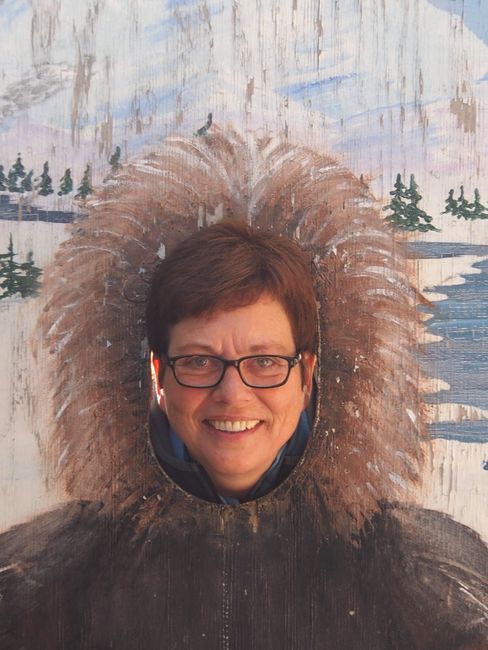
Alaska & Yukon im Herbst: 6000km mit Grizzlies, Goldgräbern und Polarlicht
vakantio.de/alaskaundyukonimherbst
Matanuska Glacier, Muskoxen are goats & a car wash
A bɔra kɛnɛ kan: 12.08.2019

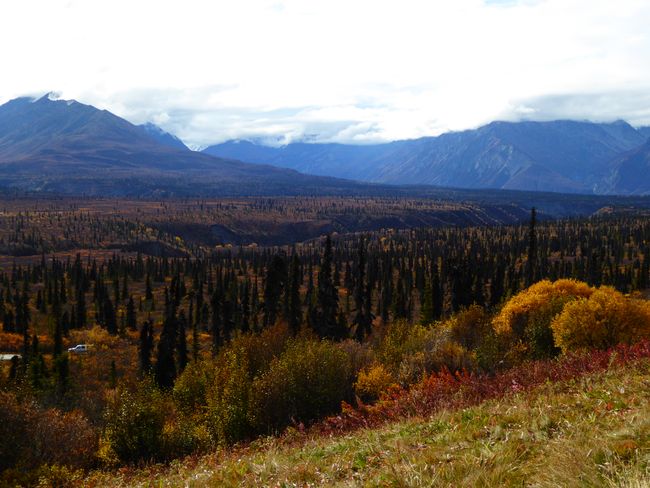
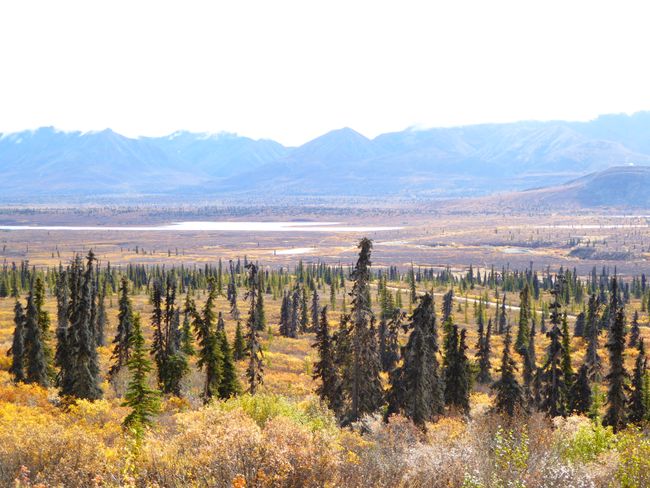
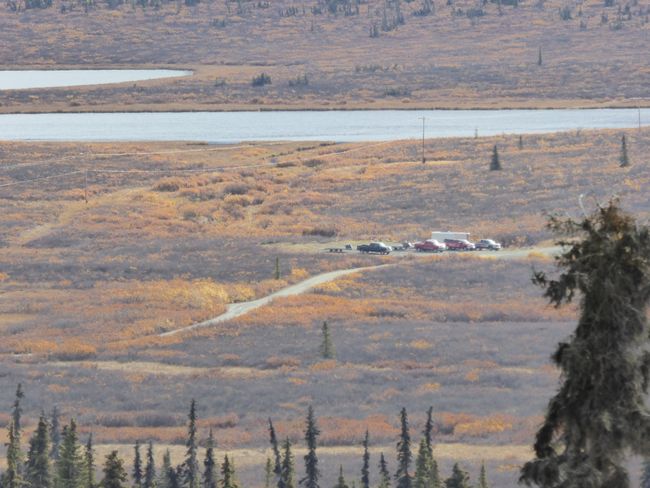
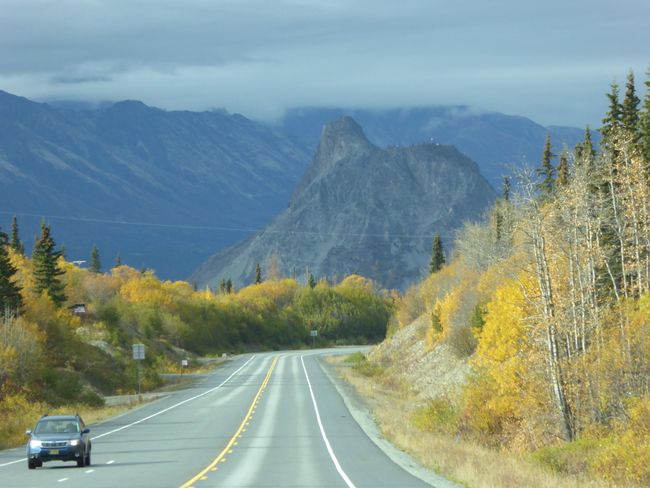
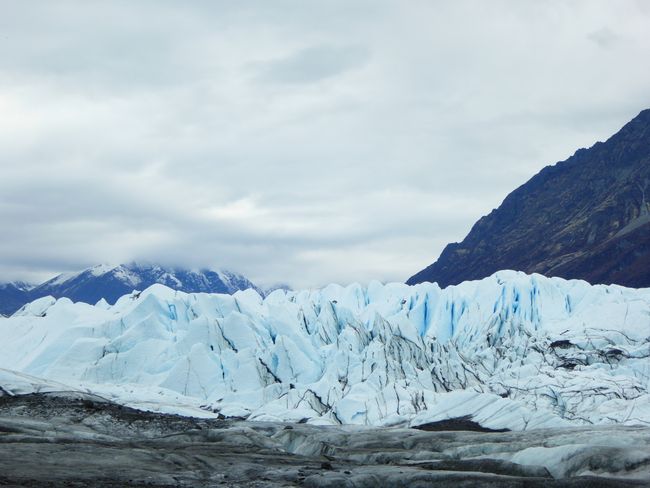
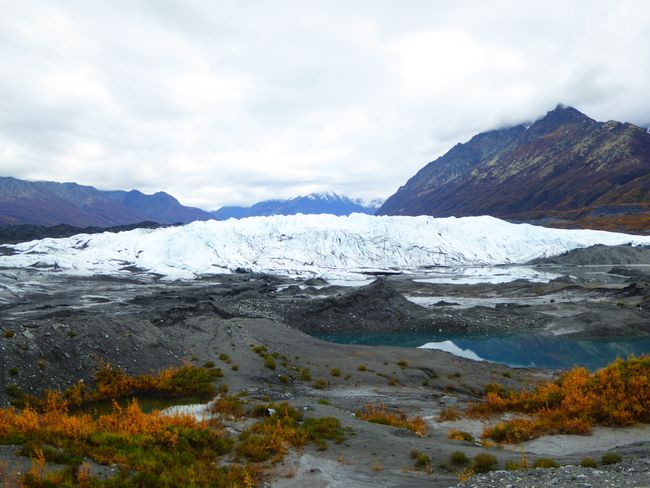
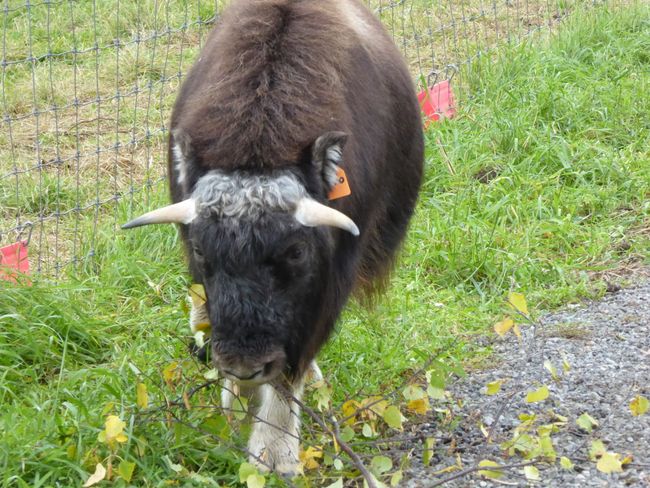
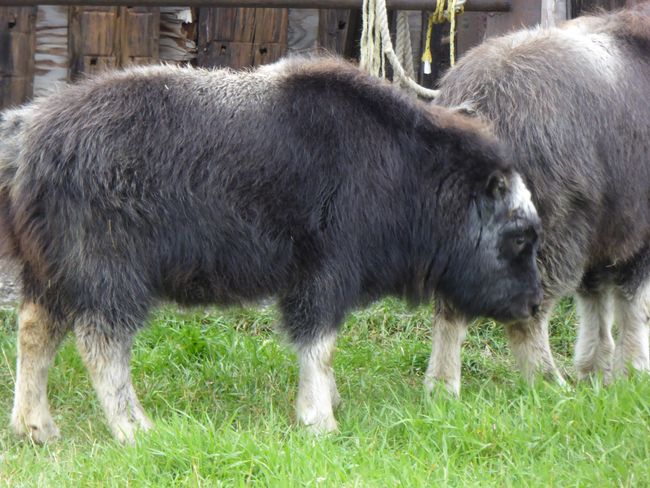
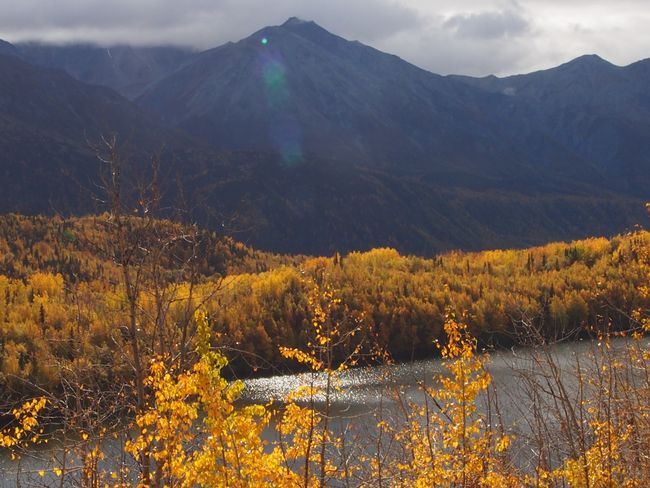
Aw ye aw tɔgɔ sɛbɛn Kibaruyaw la
19.09.2014
Waking up at 8.30am and having breakfast from the supplies from yesterday's supermarket visit. The view from the hotel of mountains and glaciers is freer today than yesterday. At the end of the hotel lawn is an air strip and some small airplanes are parked there and more are sailing in. So if you want to stay at this hotel, you can also arrive with your private plane.
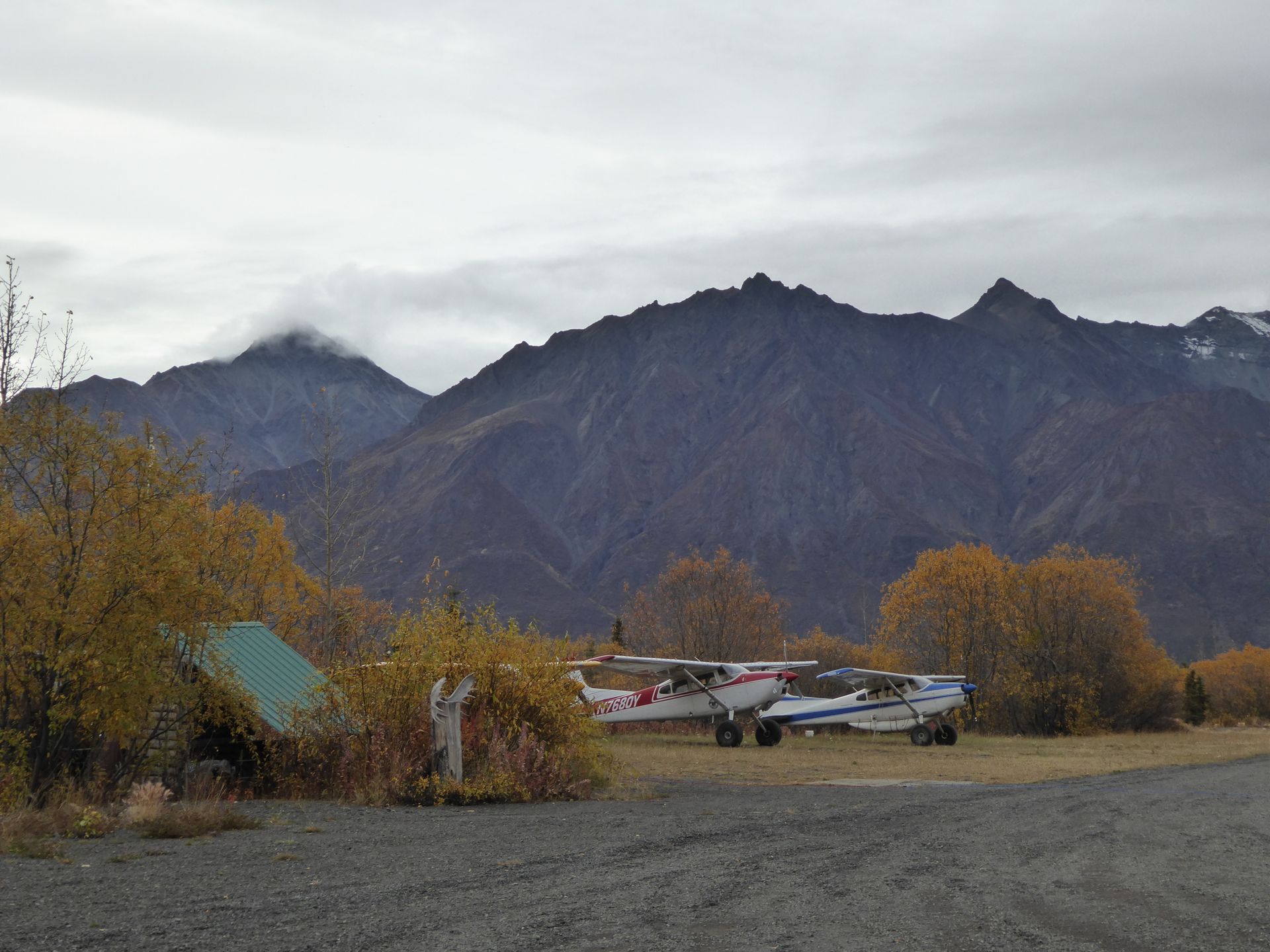
Before our departure, we search online for a hotel in Anchorage and decide on the Westmark for $135, as their check-out is not until 12.00pm tomorrow and we don't need to return the car until 3.00pm. Shortly after 11, we leave and initially drive about 12 miles in eastern direction to Eureka, to get to a viewpoint of a glacier and a wide valley. We rattle through puddles to a residential house, which - like practically all houses here - is built on stilts in the permafrost.
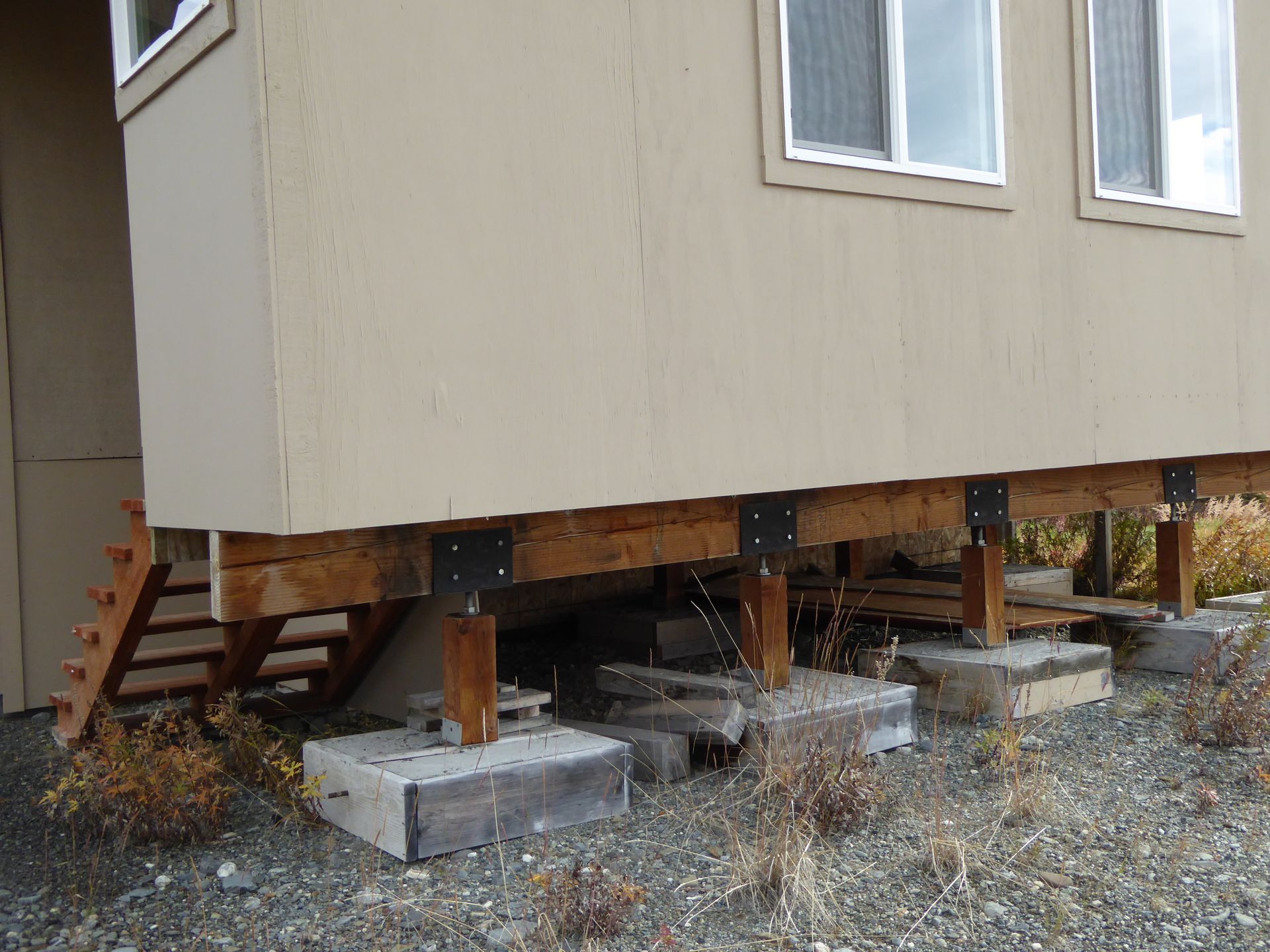


Before a resident gives us trouble, we quickly take some photos and drive back to the highway with our completely muddy car and head west. Down in the valley, we see a lot of pick-up trucks standing in the wilderness - hunters!
We exit the Glen Highway at mile 101 onto a steep gravel road that goes down to the Matanuska River.
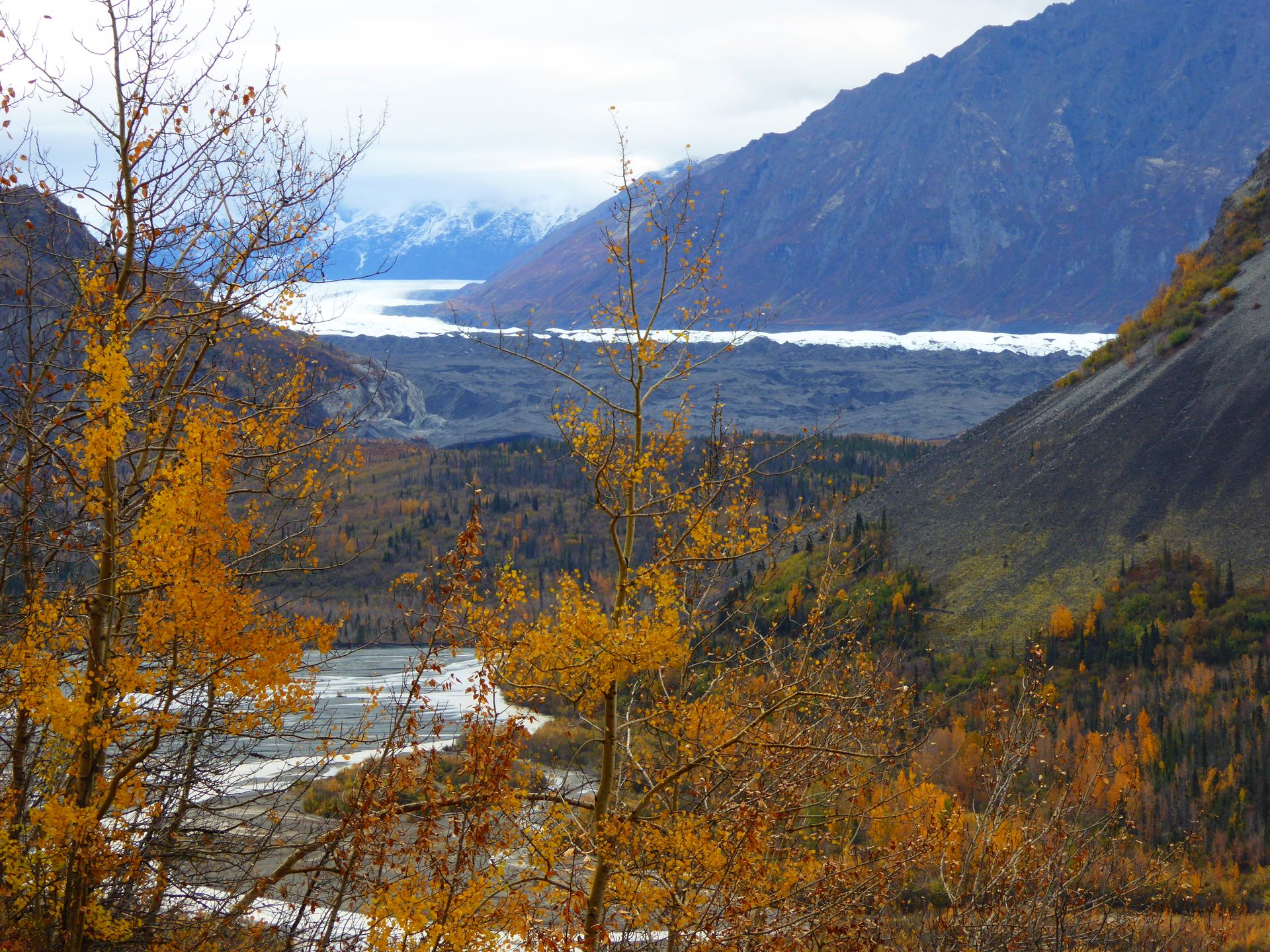
We pass a small bridge over the rushing water and bump our way to a house that houses a shop that looks like it's from the GDR in 1980. Right next to it is a barrier, where you continue to the Matanuska Glacier if you have paid $20 per person (not per vehicle!) beforehand in the shop. As retirees, we get through for $15. So we continue. The road is incredibly full of potholes, filled with water, so you can't see their depth and condition. But our car easily handles it and once again we are amazed at the end of the 2 miles by several normal cars that have arrived here apparently without damage.
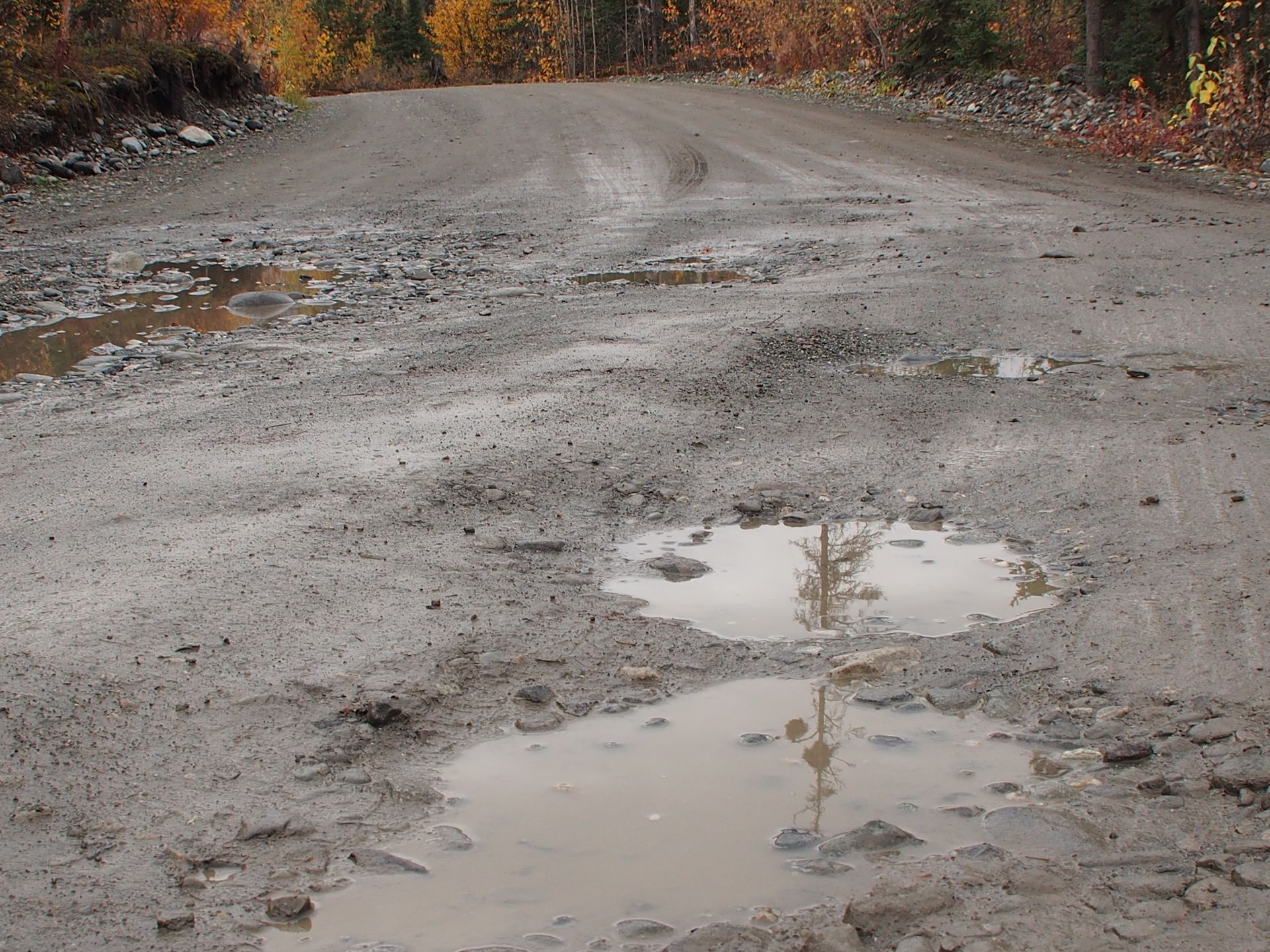
A trail leads over wooden and metal planks and half a mile towards the end of the glacier. Some people continue to climb, but they use spikes, because where the official trail ends, it is completely icy and it's no longer fun with regular hiking boots. The Matanuska Glacier is 6km wide at the end. The view of the glacier and the lateral moraines is beautiful, but the sun is somewhat missing.
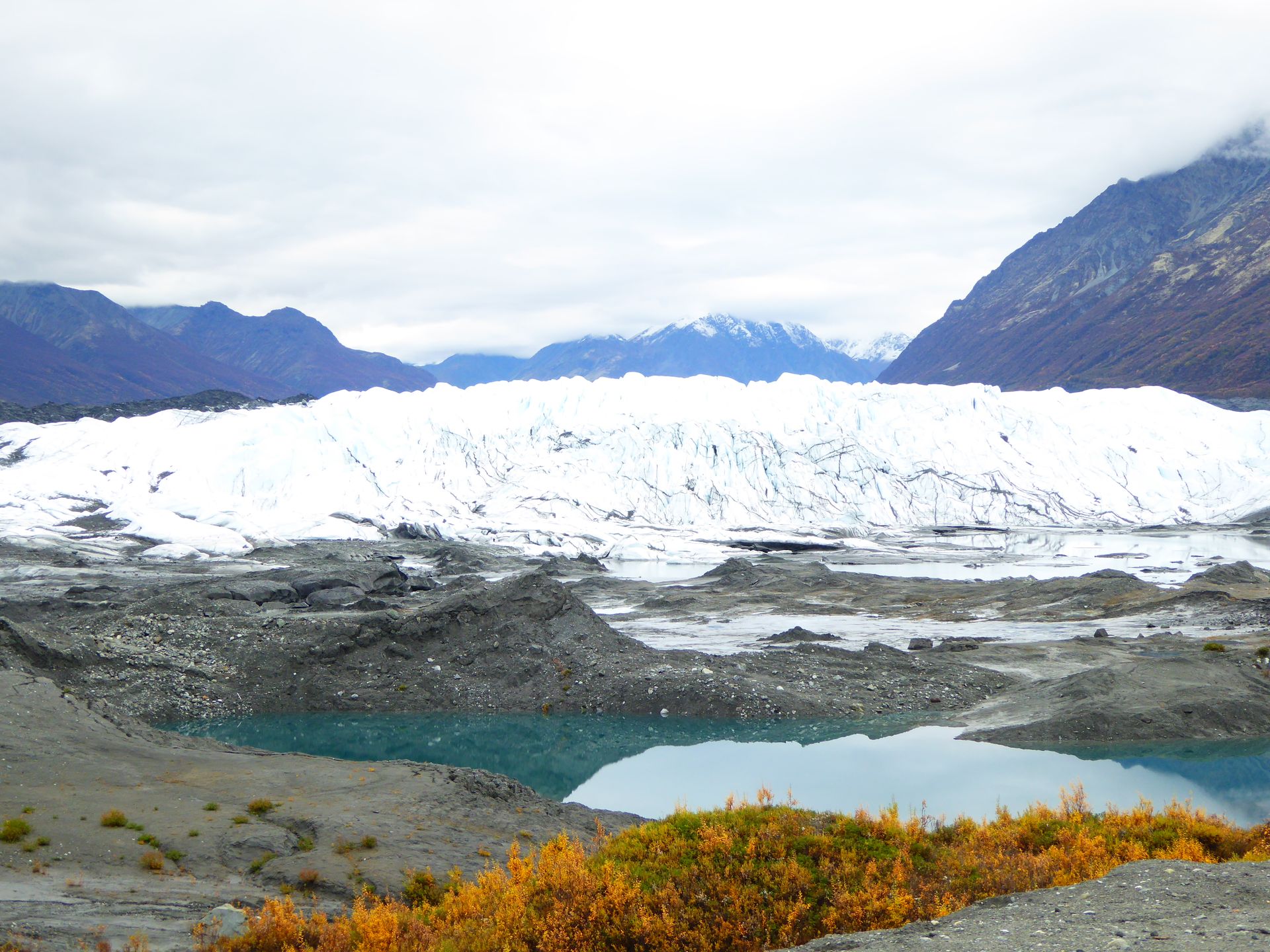
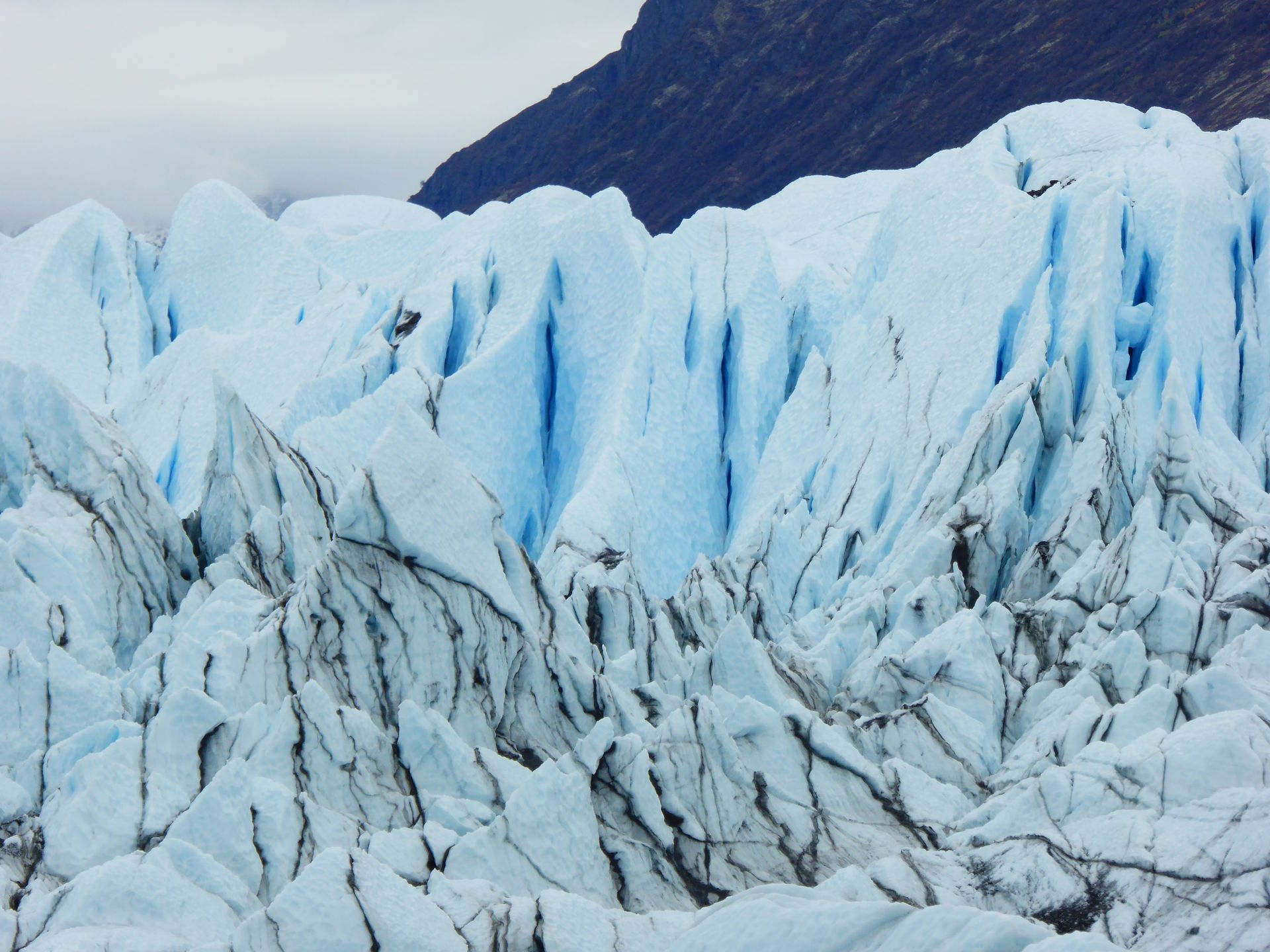
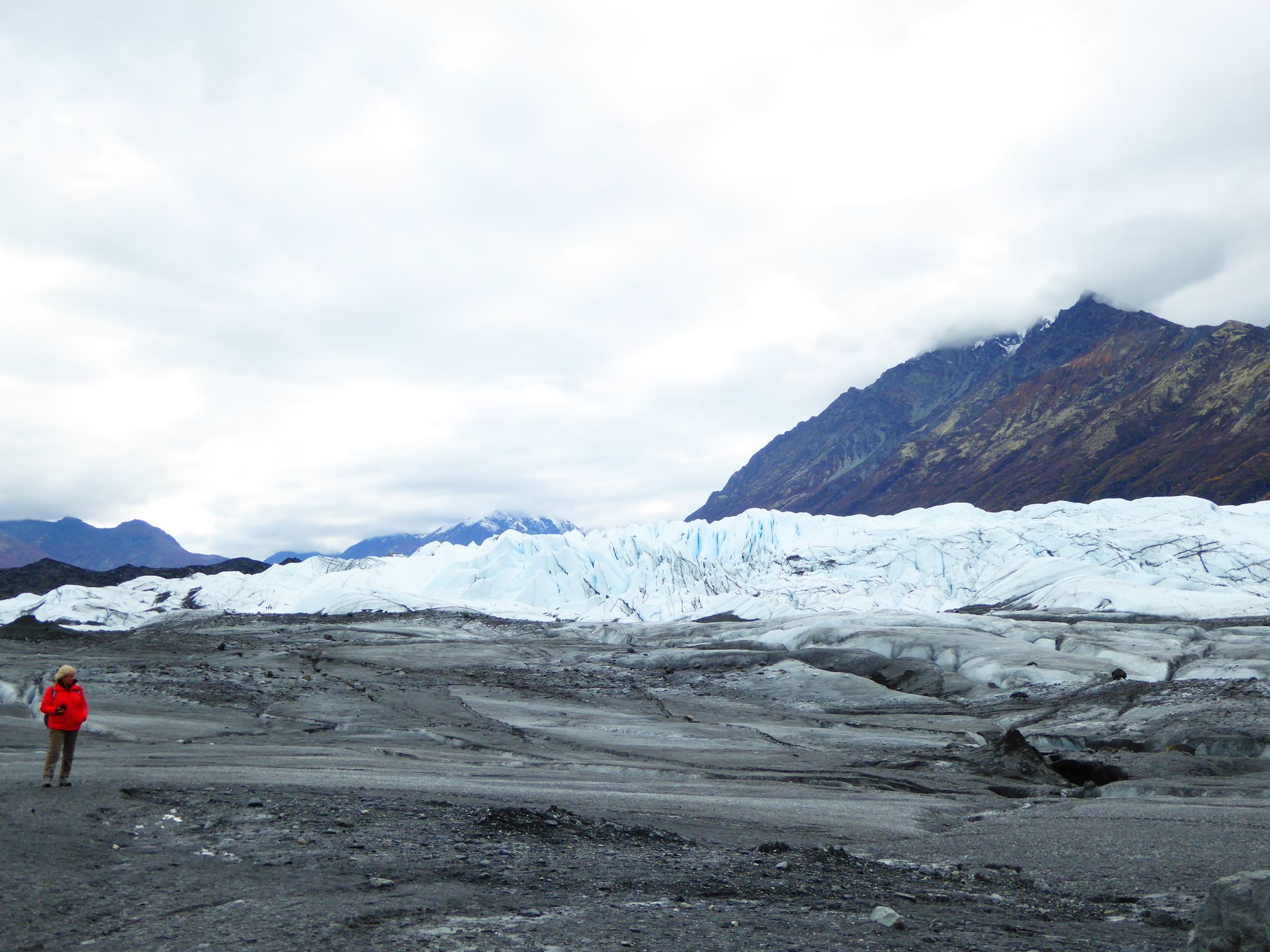
So back to the car. The hiking boots now look like a mess, full of gray mud, which comes from the sediments of the glacier and the thawed ground that we trudged through here. Tomorrow we will be heading home and after 3 weeks in hiking boots, I will finally have other shoes waiting for me in Berlin.
At the parking lot with a view of the glacier, we quickly eat some things we still have and then drive back to the highway. Now we can see on which steep slope we drove down earlier. High up there are houses right on the edge of the cliff. It's unimaginable to live there. Wouldn't it be life-threatening during the next autumn rains or during the snowmelt?

We continue on the Glen Highway and next to us is always the Matanuska River, which originates from the Matanuska Glacier. Often split like a delta with islands and sandbars, it rushes below the road alongside us.
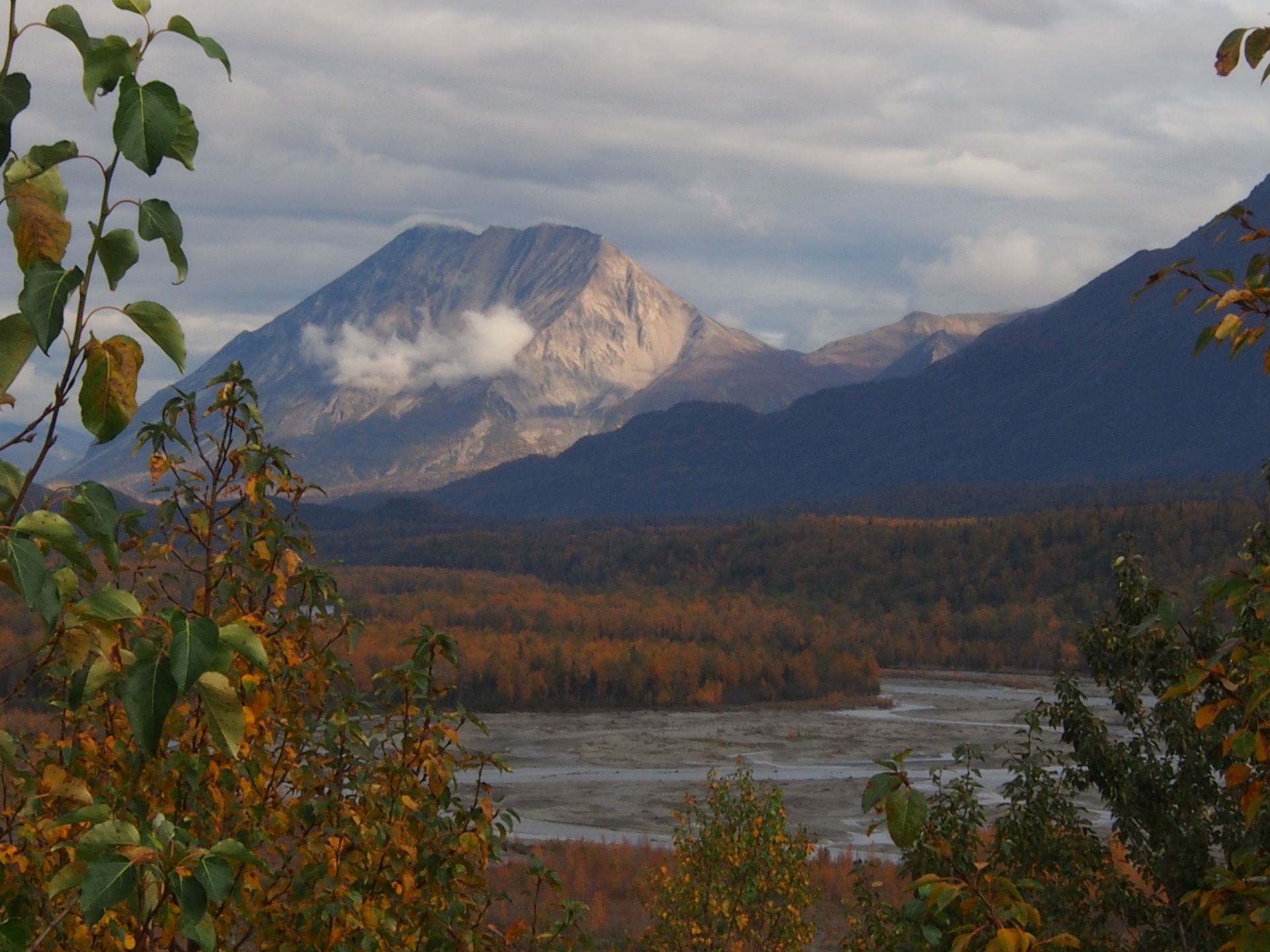
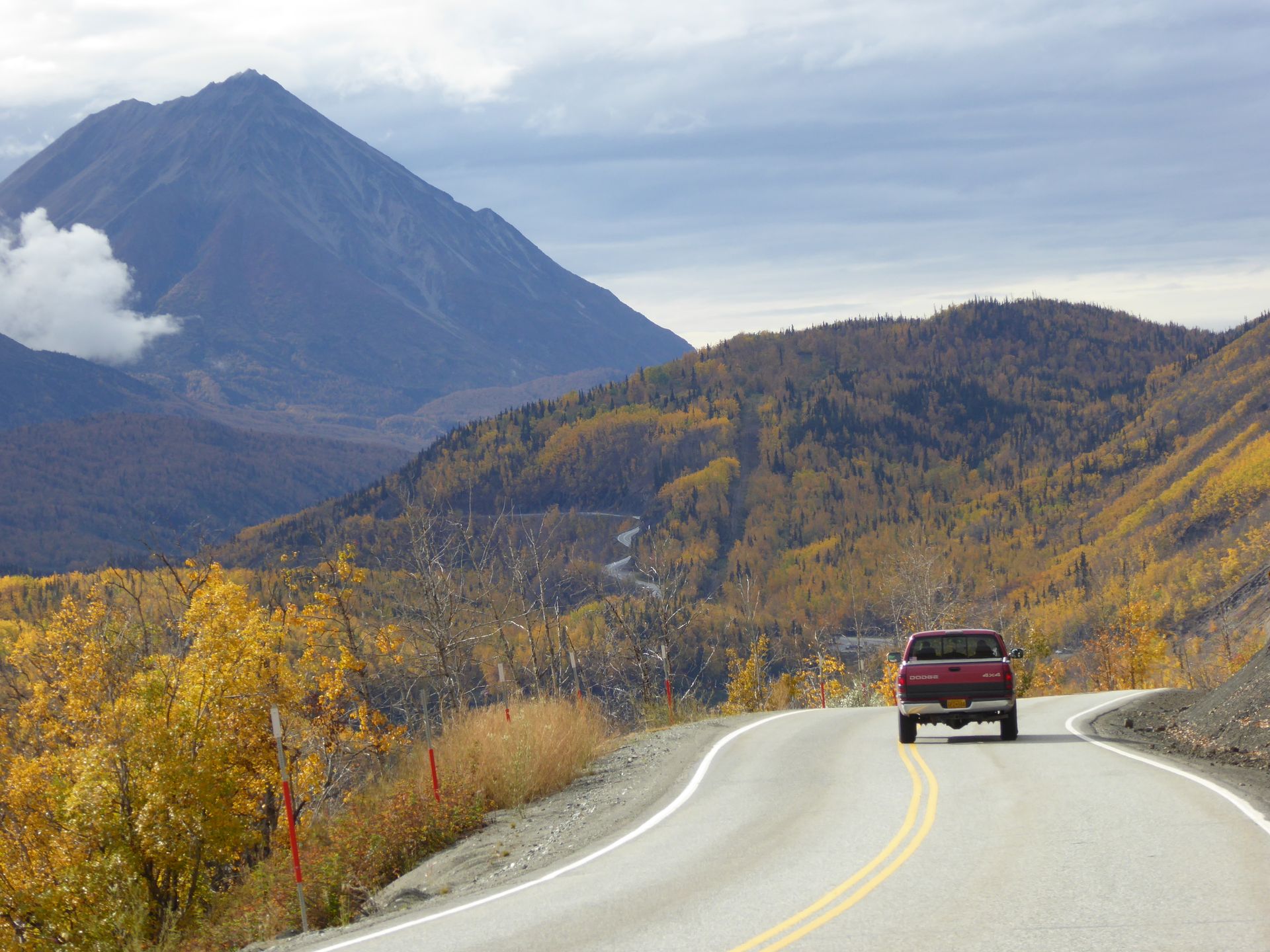
At around 4.00pm, we reach the Musk Ox Farm near Palmer. Here, muskoxen have been bred as wool producers for almost 30 years. The surprisingly short-legged animals were extinct in Alaska until 50 years ago, when some were brought here from Iceland, initially settled in Fairbanks, and the breeding program was opened here in the mid-1980s. 84 muskoxen live here. 5-7 calves are born here each year. However, muskoxen are not oxen or cattle but are more related to sheep and goats. They also do not produce musk, so the name of this breed is completely misleading. However, their fur is valuable. Especially the underfur. It is 8 times warmer than cashmere and much lighter. It can supposedly be washed and is practically indestructible. However, here, a hat costs between $165 and $190, a headband costs $135.
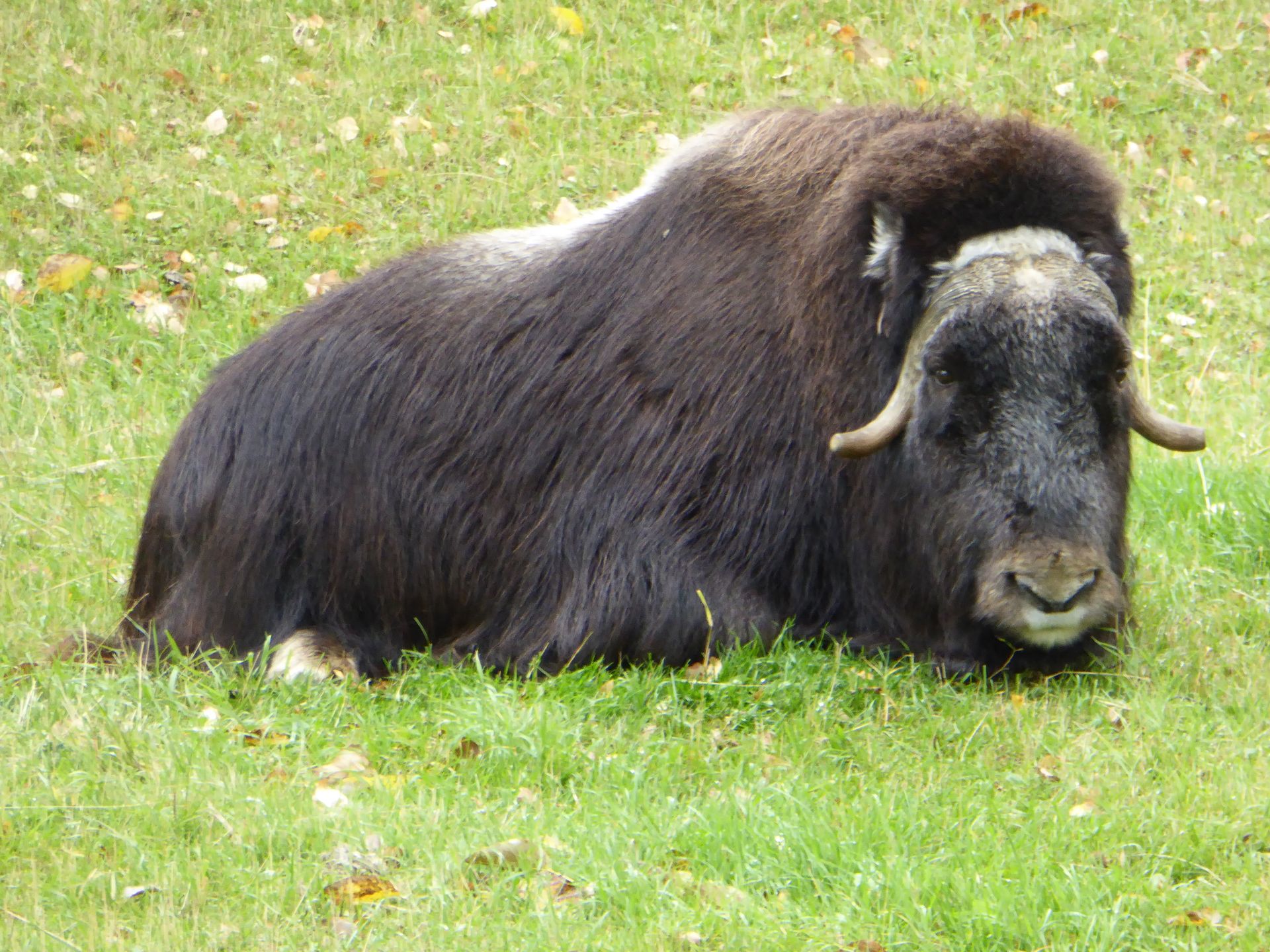
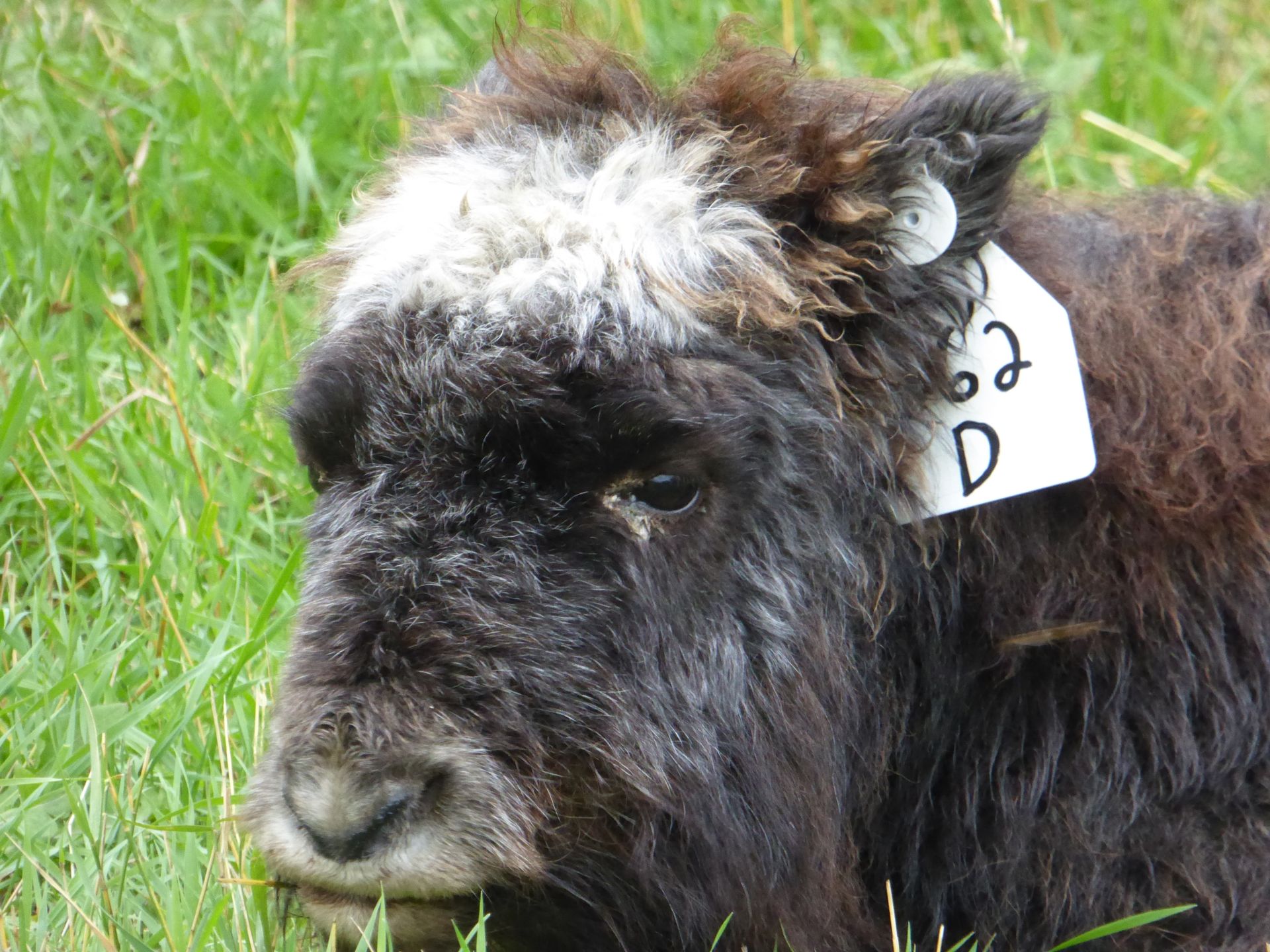
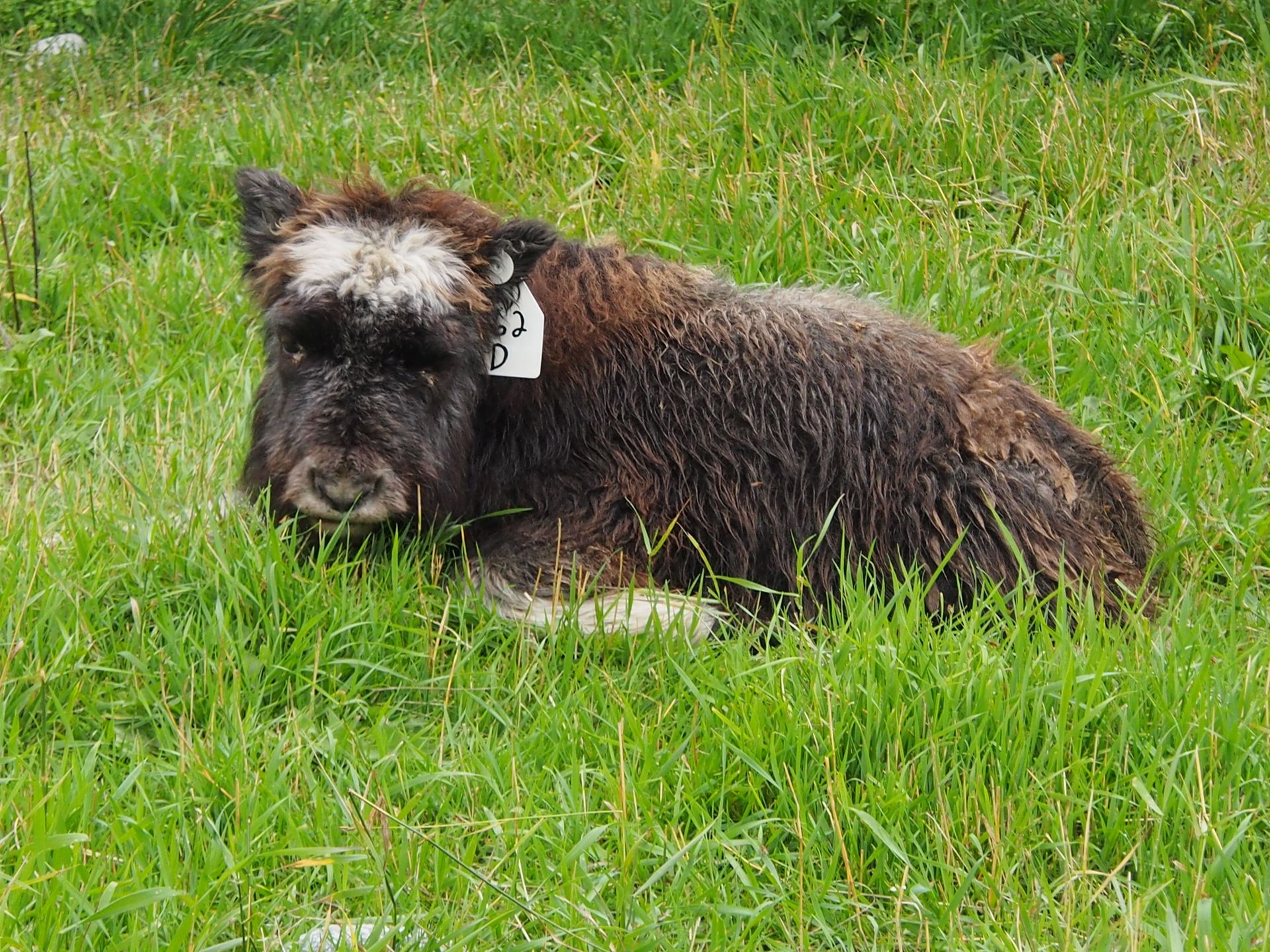

The guided tour of the farm is nice and at 5.00pm we are back in the car and driving back to Anchorage.
Shortly before, we take a detour to Fred Meyer and I buy 3 packages of hazelnut coffee beans. Around 6.00pm, in the drizzling rain, we arrive in Anchorage at the Westmark Inn. Total civilization surrounds us. With 300,000 inhabitants, almost half of all Alaskans live in this city and suddenly we are surrounded by car traffic, bars, restaurants, traffic lights, people - all of this again.
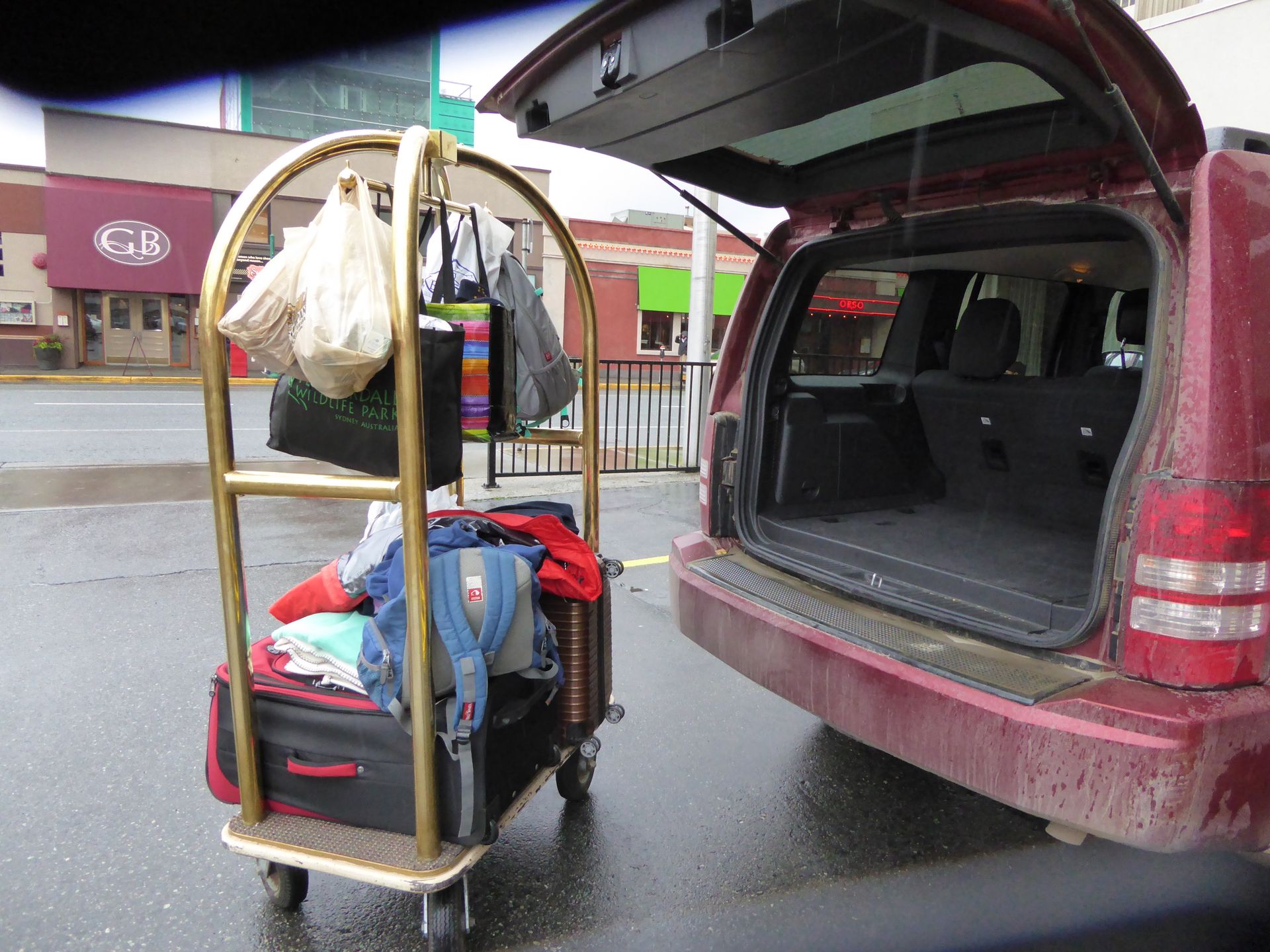
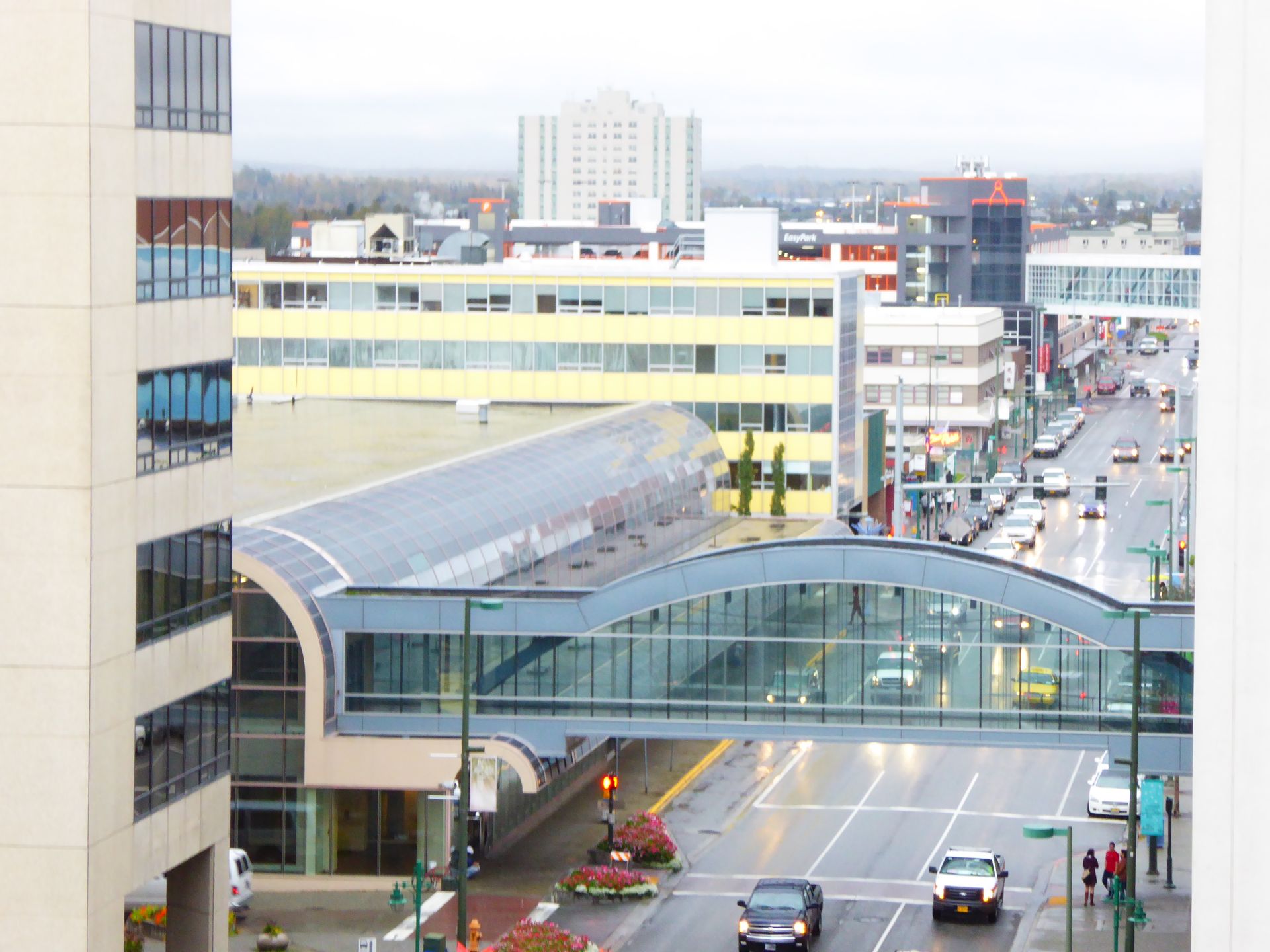
But before we settle down for our last dinner in a restaurant, we first have to clean the car. The hotel gives us directions to a car wash, where we clean our Jeep with steam cleaners, shampoo, and vacuum cleaners for about an hour. It keeps raining steadily, so that afterwards we look like wet poodles and we are really fed up with Go North. We rented the car there for 2,300 euros 3 weeks ago and now we even have to wash it before returning it! With the dirt on it, it's no fun, because the sand and mud are hard to remove. It's in every crevice. We 'borrowed' several towels somewhere in a hotel, because water pressure alone won't make it clean here. We bought a sponge and even used the glass cleaner spray from Seward on the paint.
It's dark when we drive back to the hotel. First, put on dry clothes and go opposite to a restaurant called Orso's, which has delicious fish dishes. Finally, no burger and nothing on the edge of the bed. Two beers from a local brewery and at 10.00pm we roll across the street to the hotel, feeling completely stuffed, and pack our suitcases one last time. This time it's really not a problem, as there was hardly any shopping and my bag didn't weigh 20 kilos on the way here. However, I bought a lot of coffee and I still need to quickly buy a pair of jeans tomorrow.
We sink into bed late, feeling quite exhausted, knowing that tomorrow we can sleep in.
Aw ye aw tɔgɔ sɛbɛn Kibaruyaw la
Jaabi
